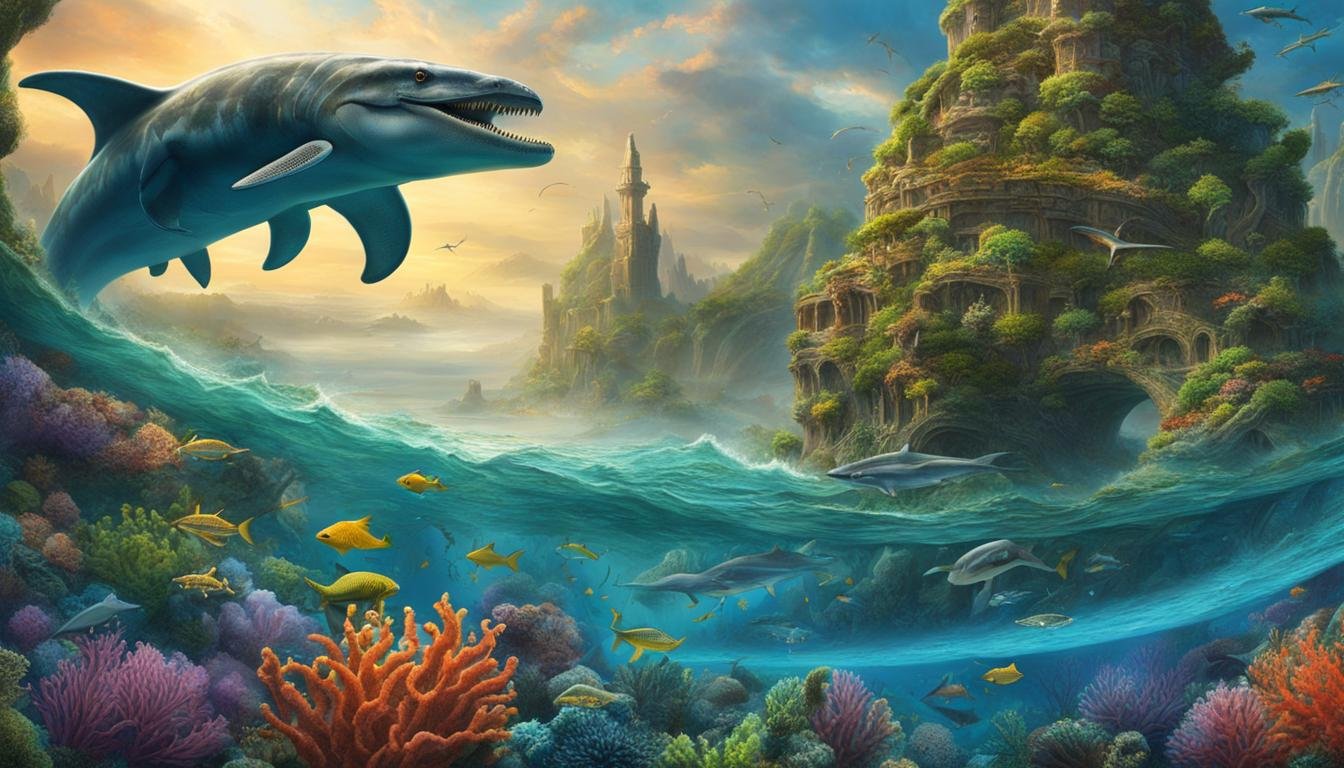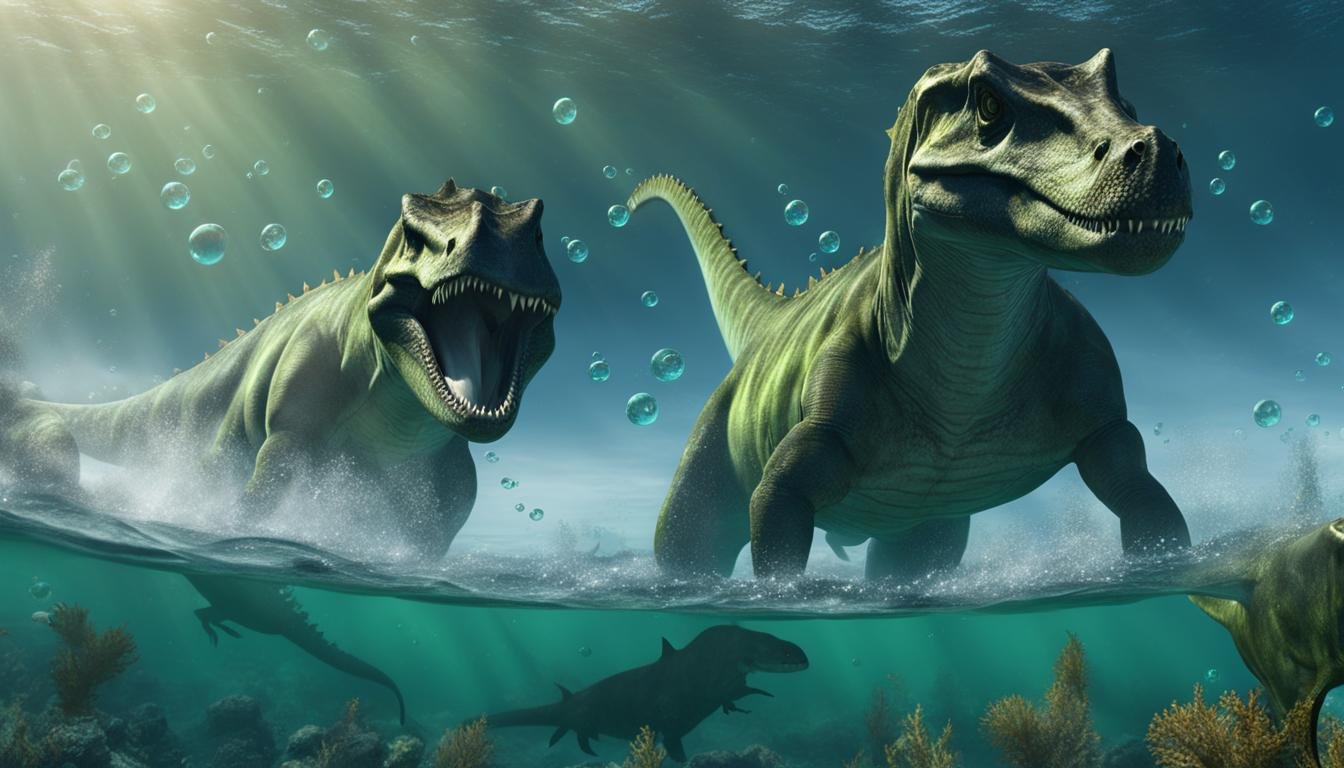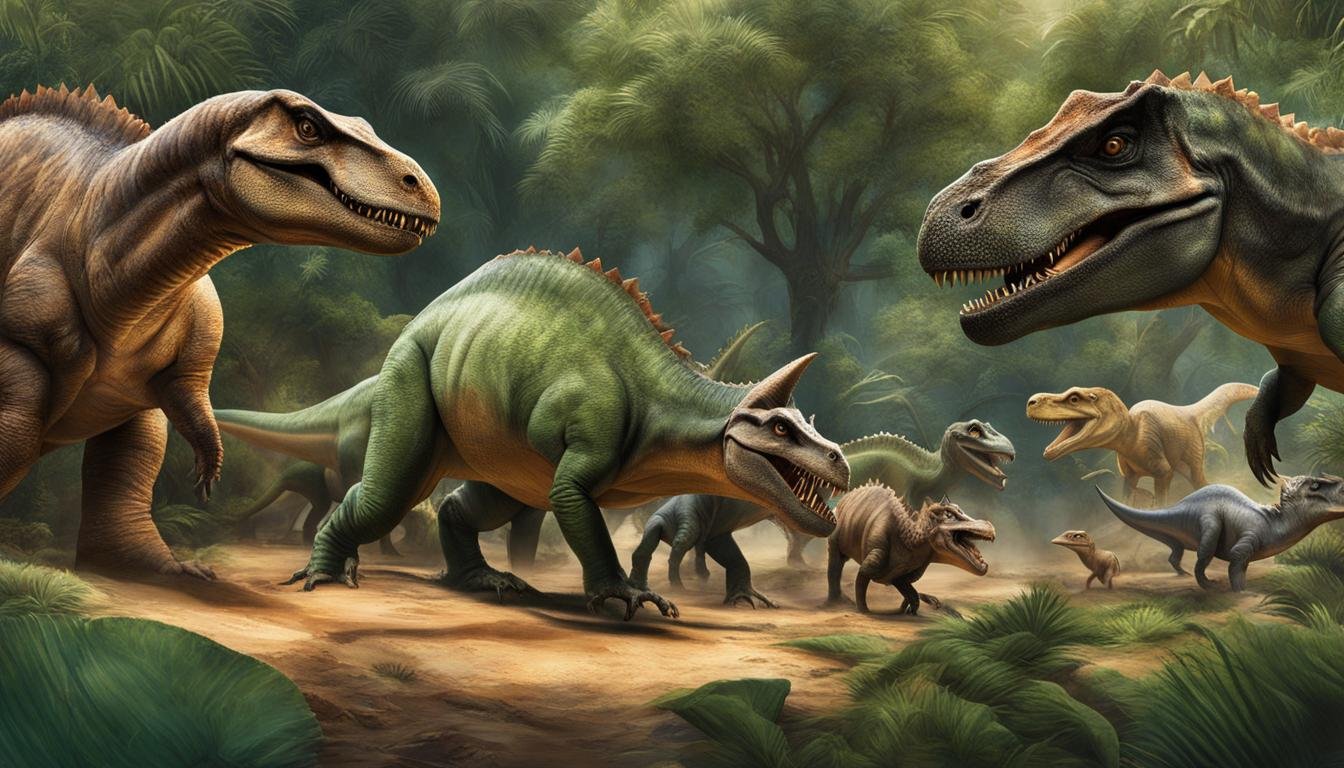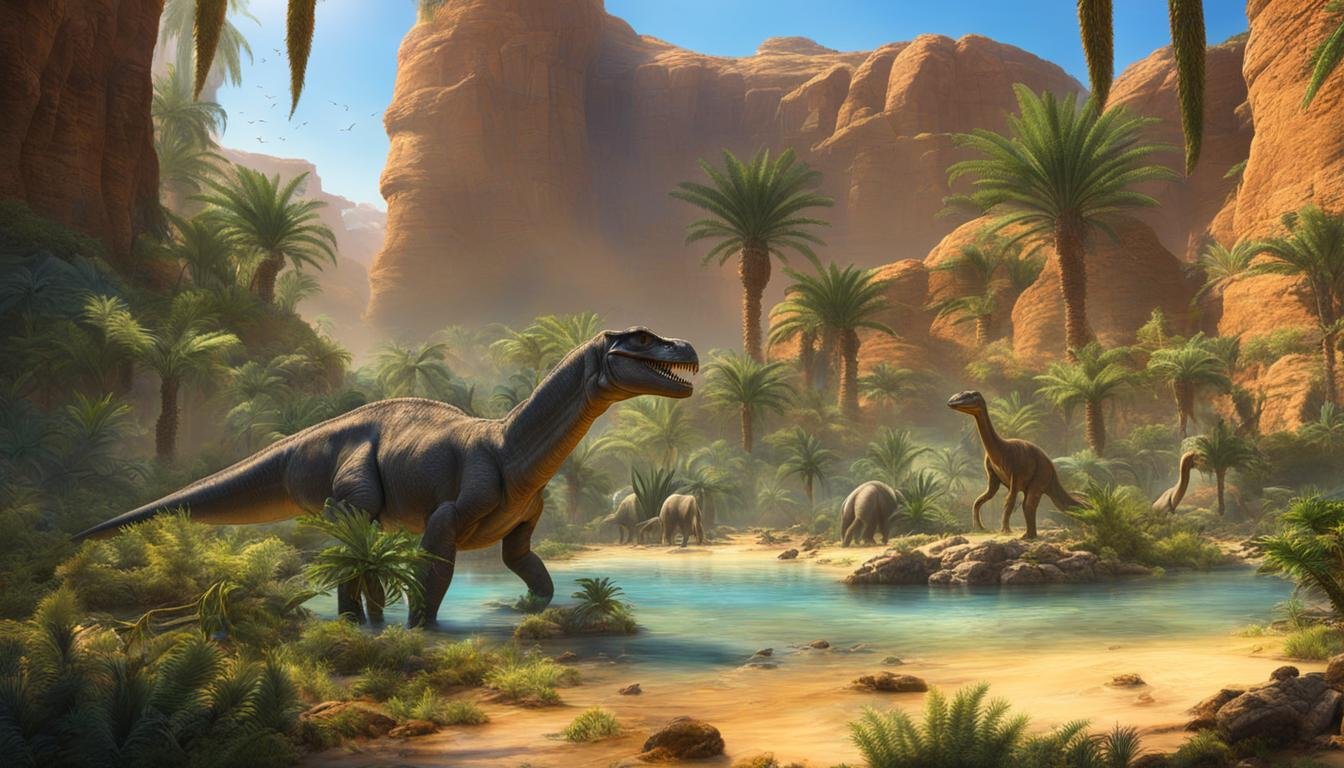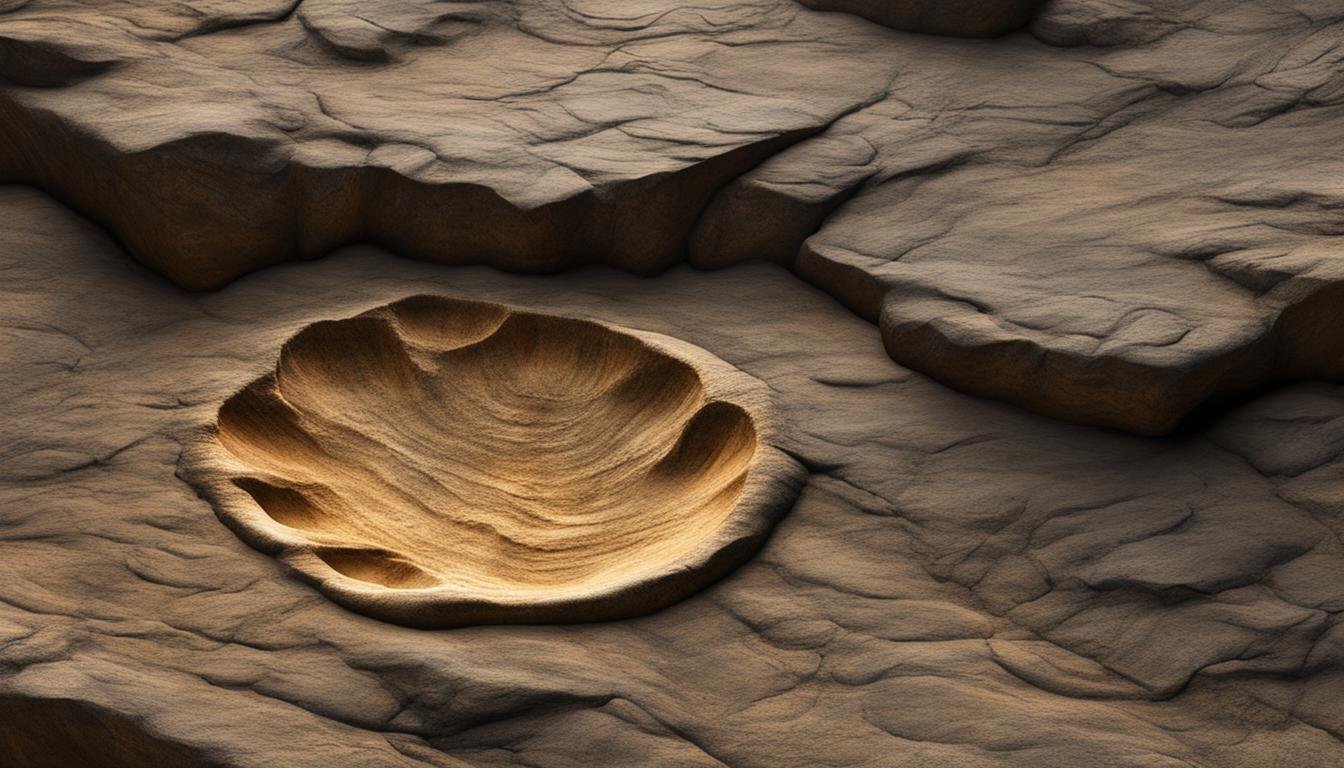Welcome to our exploration of aquatic habitats and the fascinating world of marine dinosaurs. Dive into the depths of prehistoric marine life as we uncover the secrets hidden beneath the waves. From ancient sea creatures to the rich marine ecosystems they inhabited, we’ll delve into the marine fossil records and the wonders revealed through paleontology research. Join us on this journey of deep-sea exploration and discover the captivating stories of oceanic biodiversity.
| Main Point | Description |
|---|---|
| Diversity in Aquatic Habitats | Aquatic habitats during the Mesozoic era were rich with a diverse range of marine dinosaurs. |
| Examples of Marine Dinosaurs | Notable ancient sea creatures like plesiosaurs, ichthyosaurs, and mosasaurs thrived in these underwater environments. |
| Insights from Paleontology | Research in paleontology and marine fossil records sheds light on the biology and behavior of marine dinosaurs. |
| Advances in Deep-Sea Exploration | Ongoing deep-sea exploration efforts are uncovering new findings, enhancing our understanding of ancient marine ecosystems. |
| Significance to Oceanic Biodiversity | Studying these aquatic habitats and marine dinosaurs is crucial for comprehending oceanic biodiversity and the history of life on Earth. |
Types of Water Dinosaurs: Plesiosaurs
Plesiosaurs were fascinating creatures that roamed the ancient seas during the Mesozoic era. These long-necked marine reptiles were well-adapted for life in the water, making them formidable predators and skilled underwater hunters.
One of the distinguishing features of plesiosaurs was their long neck, which allowed them to extend their reach and catch prey with ease. With their streamlined bodies and powerful flippers, plesiosaurs were incredibly agile swimmers, able to navigate the depths of the ocean in search of food.
These marine predators had a varied diet, primarily consisting of fish and squid. Their sharp teeth and strong jaws allowed them to catch and devour their prey swiftly. Some plesiosaur species were even known to hunt other marine reptiles, showcasing their prowess as apex predators of their time.
Plesiosaurs were the kings of the ancient seas, dominating their underwater habitats with their long necks, powerful flippers, and formidable hunting skills.
By studying fossil evidence, paleontologists have been able to gain insights into the biology and behavior of plesiosaurs. These ancient creatures had complex social behavior and are believed to have cared for their young, similar to modern-day marine mammals like dolphins.
| Characteristics | Description |
|---|---|
| Long neck | Allowed plesiosaurs to reach distant prey |
| Streamlined body | Facilitated efficient swimming and maneuverability |
| Powerful flippers | Aided in swift underwater movement and propulsion |
| Fish and squid diet | Main components of their food sources |
Studying plesiosaurs provides us with valuable insights into the ancient marine ecosystems and the incredible diversity of life that existed millions of years ago. These majestic creatures were a testament to the wonders of evolution and the ability of organisms to adapt to their environments.
Types of Water Dinosaurs: Ichthyosaurs
Ichthyosaurs were fish-like reptiles that lived during the Mesozoic era. They had streamlined bodies, much like modern dolphins, which allowed them to swim at high speeds through the ancient oceans. With their elongated snouts, sharp teeth, and large eyes, ichthyosaurs were well-suited to be efficient marine predators.
These reptiles had a diverse diet consisting mainly of fish and squid, which they would chase and capture with their powerful jaws and teeth. Some species of ichthyosaurs had deep-diving abilities, enabling them to hunt their prey at great depths. This made them formidable hunters and allowed them to exploit a wide range of habitats in the ocean.
Ichthyosaurs had several adaptations that contributed to their success in the marine environment. Their streamlined bodies reduced drag in the water and allowed for efficient swimming. They also had specialized flippers, similar to a dolphin’s, which aided in propulsion and maneuverability. These adaptations, combined with their deep-diving capabilities, made ichthyosaurs highly skilled and versatile predators in the ancient seas.
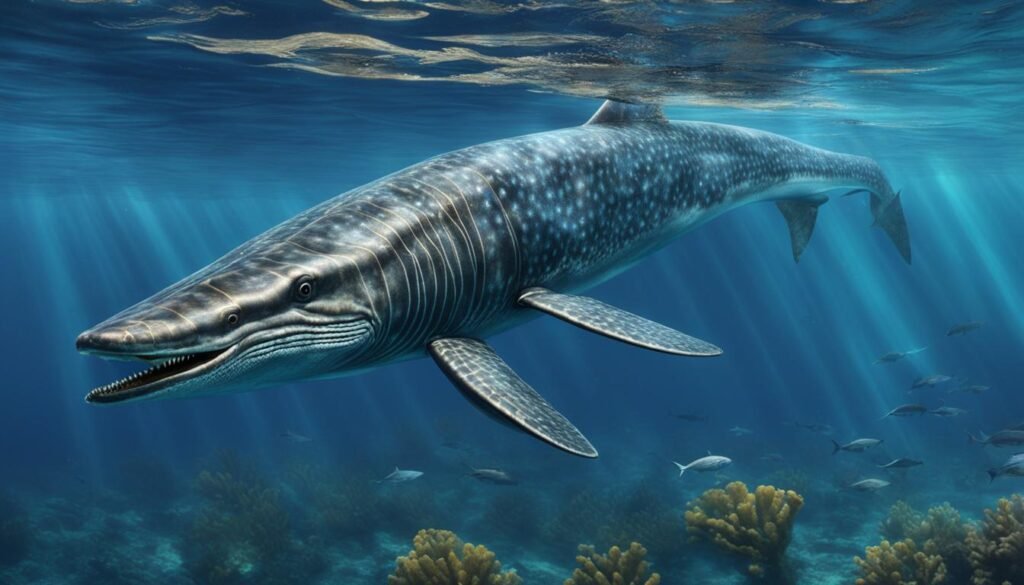
Ichthyosaur Characteristics:
- Streamlined bodies for efficient swimming
- Elongated snouts and sharp teeth for capturing prey
- Large eyes for enhanced vision underwater
- Specialized flippers for propulsion and maneuverability
- Deep-diving abilities to explore and hunt at great depths
Types of Water Dinosaurs: Mosasaurs
Mosasaurs were apex predators that roamed the ancient seas during the Late Cretaceous period. These marine reptiles were known for their streamlined bodies, powerful jaws, and sharp teeth, which made them formidable hunters. With their efficient swimming abilities, they were well-adapted for living in the warm, shallow inland seas of their time. Mosasaurs primarily fed on fish, smaller marine reptiles, and even birds, showcasing their position at the top of the marine food chain.
“The mosasaur was an incredibly efficient predator, using its streamlined body and powerful jaws to swiftly capture and devour its prey,” explains Dr. Sarah Johnson, a paleontologist specializing in marine reptiles. “Their sharp teeth allowed them to tear through flesh and their strong jaws provided the force needed to crush the shells of their prey.”
Fossil evidence suggests that mosasaurs were the dominant marine predators of their time, showcasing their crucial role in the marine ecosystem. However, like many other species, their reign came to an end with the mass extinction event that occurred at the end of the Cretaceous period. This event marked the extinction of numerous species, including mosasaurs, altering the dynamics of marine life forever.
| Mosasaur Species | Length | Diet |
|---|---|---|
| Tylosaurus | Up to 40 feet | Fish, turtles, and smaller marine reptiles |
| Mosasaurus | Up to 50 feet | Fish, ammonites, and other marine reptiles |
| Platecarpus | Up to 15 feet | Fish, squids, and small marine reptiles |
The diversity of mosasaurs is evident from the different species that have been discovered. Some, like Tylosaurus, reached lengths of up to 40 feet, while others, like Mosasaurus, could grow up to 50 feet in length. These variations in size and diet reflect the adaptability of mosasaurs and their ability to thrive in various marine environments.
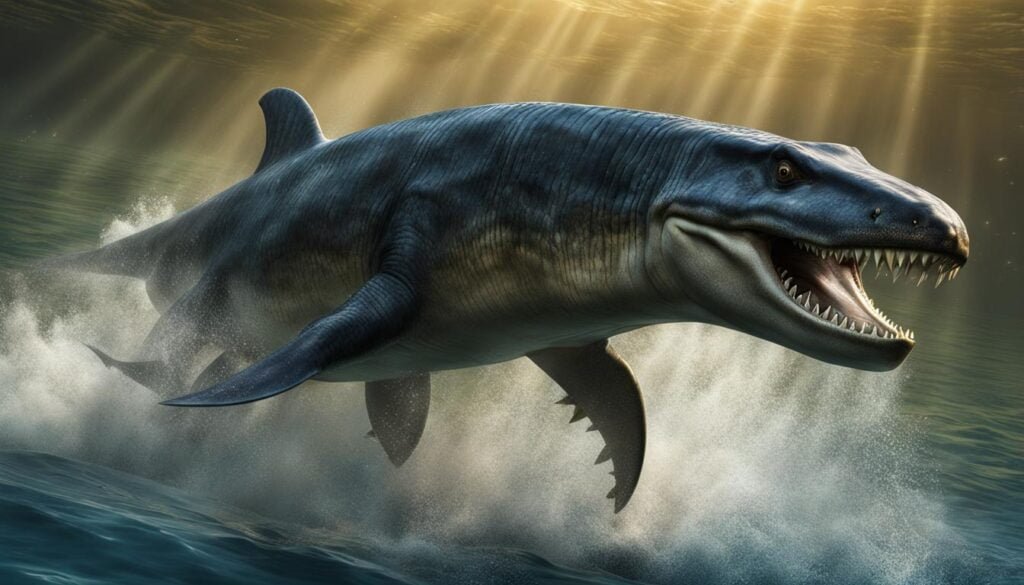
The discovery of mosasaur fossils and ongoing paleontological research has provided valuable insights into the world of these ancient marine reptiles. By studying their anatomy, behavior, and adaptations, scientists continue to piece together the story of mosasaurs and their significance in the history of life on Earth.
Adaptations of Water Dinosaurs
Water dinosaurs, such as plesiosaurs, ichthyosaurs, and mosasaurs, possessed remarkable adaptations that allowed them to thrive in aquatic habitats. These adaptations included:
- Swimming Abilities: Water dinosaurs had streamlined bodies, similar to modern-day dolphins, enabling them to move gracefully through the water. Their streamlined bodies reduced drag, making them efficient swimmers.
- Specialized Respiratory Systems: Water dinosaurs had unique adaptations in their lungs that allowed them to extract oxygen from the water. This specialized respiratory system enabled them to stay underwater for extended periods.
- Hunting Techniques: These ancient creatures employed various hunting techniques to catch their prey. Plesiosaurs used their long necks to strike quickly, while ichthyosaurs relied on speed and agility to chase down fish and squid.
- Buoyancy Control: Water dinosaurs had adaptations to control their buoyancy, allowing them to adjust their position in the water. This adaptation helped them stay afloat and maintain their desired depth.
“The adaptations of water dinosaurs highlight their incredible ability to thrive in underwater environments. Their streamlined bodies, specialized respiratory systems, hunting techniques, and buoyancy control made them well-suited for life in the ancient oceans.”
By studying the adaptations of water dinosaurs, paleontologists gain valuable insights into the evolutionary strategies employed by these ancient creatures.
Comparing Adaptations
| Dinosaur Type | Swimming Abilities | Respiratory System | Hunting Techniques | Buoyancy Control |
|---|---|---|---|---|
| Plesiosaurs | Streamlined bodies and powerful flippers | Specialized lungs for underwater respiration | Long necks for striking prey quickly | Adaptations for buoyancy control |
| Ichthyosaurs | Streamlined bodies for high-speed swimming | Specialized lungs for extracting oxygen from water | Speed and agility to chase down prey | Ability to adjust buoyancy |
| Mosasaurs | Streamlined bodies and powerful flippers | Specialized lungs for underwater respiration | Sharp teeth and powerful jaws for hunting | Adaptations for buoyancy control |
Comparing the adaptations of different water dinosaurs reveals their unique strategies for survival and sheds light on the diversity of prehistoric marine life.
Paleontology and Fossil Discoveries
The field of paleontology plays a crucial role in our understanding of ancient life on Earth. Through the study of fossils, paleontologists uncover valuable insights into the biology, behavior, and evolution of prehistoric organisms. In the case of water dinosaurs, fossil discoveries have provided a wealth of information about these fascinating creatures and their existence during the Mesozoic era.
Underwater fossils, in particular, have been instrumental in reconstructing the lives of water dinosaurs. The preservation of these fossils in aquatic habitats has allowed paleontologists to examine the intricate details of these ancient creatures, from their skeletal structures to their soft tissues. By carefully studying these fossils, scientists can unravel the mysteries of how water dinosaurs lived, moved, and interacted with their environment.
Paleontologists have made significant contributions to our understanding of water dinosaurs through their meticulous research and analysis. By piecing together the fossil evidence, they can reconstruct the anatomy and behaviors of these ancient creatures with remarkable accuracy. This knowledge helps us develop a clearer picture of the role that water dinosaurs played in ancient marine ecosystems and the broader context of Earth’s history.
| Paleontologists | Role |
|---|---|
| Mary Anning | Discoveries of marine reptiles |
| Roy Chapman Andrews | Explored Gobi Desert fossils |
| Robert Bakker | Contributions to dinosaur paleontology |
Continued paleontological research and exploration hold the promise of uncovering even more fossil evidence related to water dinosaurs. Deep-sea expeditions and technological advancements in underwater exploration provide new opportunities for discovery. This ongoing work allows us to expand our knowledge of prehistoric aquatic habitats, the diversity of marine life, and the evolutionary history of water dinosaurs.
Notable Paleontologists
- Mary Anning: Known for her discoveries of marine reptiles and her contributions to the field of paleontology.
- Roy Chapman Andrews: Pioneered expeditions to the Gobi Desert, unearthing numerous fossils and expanding our understanding of prehistoric life.
- Robert Bakker: Renowned paleontologist whose research has greatly contributed to our knowledge of dinosaurs and their habitats.
Importance of Aquatic Habitats and Marine Dinosaurs
Aquatic habitats and marine dinosaurs played a crucial role in shaping prehistoric marine ecosystems. These ancient creatures, such as plesiosaurs, ichthyosaurs, and mosasaurs, were key components of the underwater food chain, contributing to the balance and biodiversity of marine ecosystems. The study of these habitats and dinosaurs through paleontological research has provided valuable insights into the history of marine life and the dynamics of ancient oceans.
Marine biodiversity is a fundamental aspect of our planet’s natural heritage. By studying the fossils and remnants left behind by marine dinosaurs, scientists gain a deeper understanding of the diversity of ancient marine life forms. These findings contribute to our knowledge of evolutionary trends, ecological interactions, and the impact of environmental changes on marine ecosystems throughout history.
Furthermore, paleontological research allows us to reconstruct ancient marine environments and understand how they have changed over time. By analyzing the fossil records of marine dinosaurs and other marine organisms, scientists can identify patterns and trends that help us comprehend the evolution of our planet’s oceans. This knowledge is not only fascinating from a scientific standpoint but also has practical implications for the conservation and management of present-day marine ecosystems.
In summary, the importance of aquatic habitats and marine dinosaurs cannot be overstated. The study of these ancient creatures through paleontological research provides critical insights into marine biodiversity, ecosystem dynamics, and the history of our planet. By delving into the mysteries of the past, we gain a better understanding of the present and can make more informed decisions regarding the future of our oceans.
Aquatic Habitat and Marine Dinosaurs Table
| Dinosaurs | Role in Marine Ecosystem | Adaptations |
|---|---|---|
| Plesiosaurs | Acted as predators, maintaining the balance within the ecosystem | Long necks for better reach, powerful flippers for swimming |
| Ichthyosaurs | Marine predators with high-speed swimming abilities | Streamlined bodies, efficient hunting techniques |
| Mosasaurs | Apex predators, feeding on fish and smaller marine reptiles | Streamlined bodies, powerful jaws, sharp teeth |
Conclusion
Aquatic habitats and marine dinosaurs have played a significant role in the history of our planet. These ancient sea creatures, such as plesiosaurs, ichthyosaurs, and mosasaurs, inhabited underwater habitats and thrived in marine ecosystems during the Mesozoic era. Through the diligent efforts of paleontology research and the discovery of fossils, we have gained a deeper understanding of the rich biodiversity and behavior of these remarkable creatures.
Exploring the world of aquatic habitats and marine dinosaurs has provided valuable insights into the ancient sea creatures that once roamed our oceans. Through their unique adaptations, these creatures were able to dominate their marine environments and contribute to the balance of prehistoric ecosystems. The study of paleontology has allowed us to unlock the secrets of their anatomy, biology, and their place in the history of life on Earth.
As we continue to delve into paleontological research and discover more about the ancient sea creatures that inhabited our planet, we gain a greater appreciation for the diversity of life that has existed throughout time. The study of aquatic habitats and marine dinosaurs not only sheds light on our planet’s past but also helps us better understand the intricate dynamics of modern marine ecosystems. By preserving and celebrating these ancient sea creatures, we honor their place in the tapestry of life and deepen our connection to the natural world.

